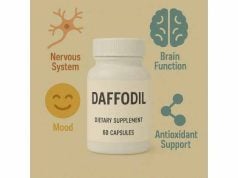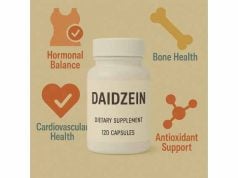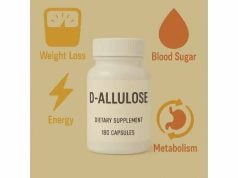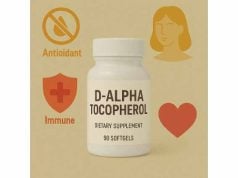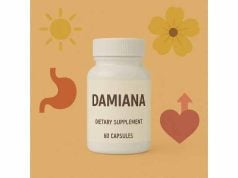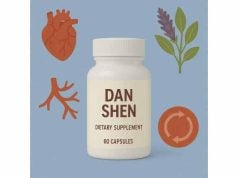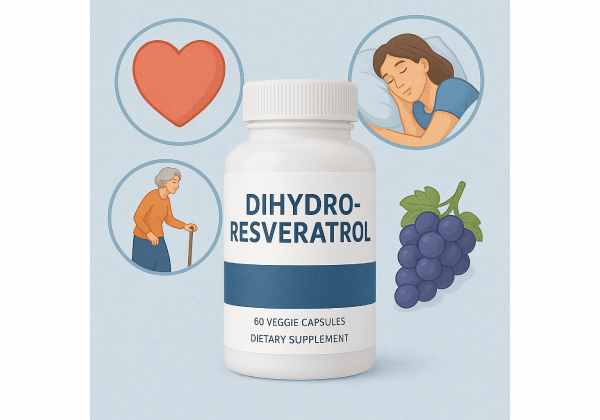
Dihydroresveratrol (often shortened to DHR) is a gut-microbiota–derived metabolite of resveratrol—the famous polyphenol in grapes and Japanese knotweed. Although resveratrol itself is rapidly transformed after you swallow it, DHR appears in the gut and circulation and may account for part of resveratrol’s biological activity. Early laboratory and animal research links DHR to anti-inflammatory and cell-protective effects, with intriguing signals in brain and gut models. Human dosing for DHR itself hasn’t been established, but clinical trials with resveratrol offer practical starting points if your goal is to encourage DHR formation naturally. This guide explains how DHR differs from resveratrol, what the evidence actually shows, who should avoid it, and how to think about timing, combinations, and safety so you can make an informed, clinician-guided decision.
Essential Insights for Dihydroresveratrol Users
- Dihydroresveratrol is a major gut-derived metabolite of resveratrol and may drive part of resveratrol’s anti-inflammatory effects.
- Evidence is mostly preclinical; there are no established human outcome trials with isolated DHR.
- Practical intake to raise DHR endogenously: resveratrol 100–500 mg/day with food (typical clinical-trial range).
- Safety caveat: DHR shows estrogen-related signaling in cell models; individuals with hormone-sensitive conditions should avoid unless medically supervised.
- Avoid if pregnant, breastfeeding, under 18, or on anticoagulants/antiplatelets without clinician approval.
Table of Contents
- What is dihydroresveratrol?
- Does it work? Key benefits
- How to use it effectively
- How much and when to take?
- Safety, interactions, who should avoid
- What the evidence actually says
What is dihydroresveratrol?
Dihydroresveratrol (DHR) is a hydrogenated derivative of resveratrol. When you ingest resveratrol—from supplements or foods—your intestinal microbes can “saturate” its central double bond, producing DHR. In parallel, your own enzymes attach sulfate and glucuronide groups (phase-II conjugation) to both resveratrol and DHR. The net effect is that very little free resveratrol remains in circulation; instead, a mixture of metabolites (including DHR and its conjugates) predominates.
Why does this matter? Because metabolites are not just waste. In animal and tissue studies, DHR is recoverable at higher levels than parent resveratrol in several tissues and fluids after oral resveratrol, and at physiologically realistic concentrations it can modulate inflammatory signaling and cell proliferation. In mice, long-term oral resveratrol leads to a metabolite profile dominated by DHR and another microbially derived compound (lunularin), both of which show stronger anti-inflammatory and anti-proliferative effects in colon and kidney models than resveratrol itself at equal, tissue-relevant levels. In humans, controlled feeding and excretion studies show pronounced person-to-person differences in the ability to make DHR—driven by which gut bacteria you host. Strains such as Slackia and Adlercreutzia species convert resveratrol to DHR efficiently; others do not. That helps explain why people respond differently to the same resveratrol dose.
Chemically, DHR is a bibenzyl (not a stilbene like resveratrol), and its altered structure appears to change both stability and how it is processed by human enzymes (sulfotransferases and UDP-glucuronosyltransferases). In an intestinal epithelial model, DHR favors glucuronidation pathways more than resveratrol does, which may influence its half-life and how long it persists in gut tissues.
Two practical takeaways follow. First, if you tolerate resveratrol but you are a “low-converter,” you might not generate much DHR; stacking strategies that support a healthy, diverse microbiota may matter as much as the polyphenol dose. Second, if you do convert resveratrol efficiently, DHR—rather than unmetabolized resveratrol—may be the dominant actor at the tissue level, especially in the colon where microbial transformation is highest.
Put plainly: DHR is not a marketing tweak; it is a distinct, gut-dependent compound with emerging biological relevance. But because human trials with isolated DHR are lacking, any benefit claims must be framed as hypotheses generated from preclinical and mechanistic data, not clinical outcomes.
Does it work? Key benefits
The fairest answer is: we have encouraging mechanism-level and animal data for dihydroresveratrol, while rigorous human outcome data are not yet available for DHR itself. Here’s what the evidence suggests so far.
Inflammation and immune signaling. DHR consistently dampens pro-inflammatory pathways in vitro at concentrations measured in vivo after oral resveratrol. In mice, DHR rises in organs and the gastrointestinal tract after resveratrol intake and, at those physiological levels, inhibits inflammatory mediators more strongly than resveratrol. In brain models, DHR blunts activation of the NLRP3 inflammasome in microglia, apparently via improved autophagy and mitophagy signaling, and reduces neuroinflammatory damage in Alzheimer’s-type mouse models. These results line up with the broader resveratrol literature showing anti-inflammatory effects—while suggesting that metabolites such as DHR may be responsible for a meaningful share of the in vivo activity.
Gut and colonic environment. Because DHR becomes highly abundant in the colon, it is plausible that colonic mucosa sees DHR more than resveratrol. In animal work, tissue distributions support this: after oral resveratrol, DHR and its conjugates dominate in bile, serum, liver, kidney, and colon, whereas free resveratrol is often undetectable. That spatial pattern makes DHR a credible candidate for local gut benefits (for instance, modulation of epithelial inflammation), though direct human evidence is still needed.
Cell health and signaling nuance. DHR’s signaling is not uniformly “good.” In some hormone-sensitive cell lines (e.g., ER-positive breast cancer), picomolar DHR can stimulate proliferation, while higher concentrations inhibit it—an estrogen-like, biphasic pattern. This duality is common among phytoestrogens and reinforces why claims should be tempered and personalized risk considered.
Antioxidant and metabolic context. At baseline, DHR retains phenolic antioxidant capacity similar to resveratrol’s, but its distinct metabolism could mean different tissue exposure profiles. If you are using resveratrol to support cardiovascular or metabolic markers, DHR may be a mechanistic contributor; still, those clinical claims belong to resveratrol trials, not to DHR alone.
Bottom line on efficacy: If you are seeking human-proven outcomes (blood pressure, HbA1c, cognitive endpoints), those belong to resveratrol clinical trials of varying quality. If you are exploring mechanisms (inflammation, mitophagy, colon exposures), DHR is a key actor. The strongest near-term, person-relevant inference is that your capacity to generate DHR from resveratrol—and thus derive any metabolite-driven effects—depends on your microbiota composition and broader diet.
How to use it effectively
You have two practical pathways: (1) encourage your body to make dihydroresveratrol by taking resveratrol under guidance, or (2) purchase a product labeled as DHR (less common and typically sold for research use). Because clinically validated dosing for isolated DHR does not exist, most evidence-based strategies revolve around optimizing endogenous conversion.
1) If your goal is to raise DHR naturally (via resveratrol):
- Choose consistent dosing within clinical-trial norms (see the dosage section): many trials use 100–500 mg/day of resveratrol, often with meals. This keeps exposures within the best-characterized safety window while allowing your microbiota to generate DHR.
- Take with food (especially mixed meals). Co-ingestion can improve tolerance and may modestly aid absorption; the majority of resveratrol is still rapidly conjugated, but what reaches the colon becomes substrate for DHR formation.
- Mind your microbiota. Individuals differ dramatically in DHR production. Diets rich in diverse fibers and polyphenols support a more capable community. While specific “DHR-boosting” probiotic strains are not clinically validated, genera such as Slackia and Adlercreutzia have been identified in human mechanistic studies as DHR producers; a plant-forward pattern and prudent antibiotic use are reasonable levers.
- Combine rationally, not indiscriminately. If you already take anti-platelet or anticoagulant agents, avoid stacking resveratrol or DHR without approval. For metabolic goals, pair with foundational pillars (sleep, training, diet quality) before layering supplements.
2) If you’re considering isolated DHR:
- Recognize the evidence gap. There are no human dosing standards for DHR, and many DHR products are sold for laboratory use. Avoid self-experimentation with concentrated DHR unless you are in a clinician-supervised context and can verify quality and legal status in your jurisdiction.
- Quality and testing. If a DHR-labeled supplement is available to consumers where you live, look for third-party testing (e.g., USP, NSF) and ask the company for a certificate of analysis. Confirm the labeled compound is dihydroresveratrol (not resveratrol), the amount per capsule, and the excipients.
Implementation tips that matter regardless of route:
- Start low, titrate slowly. Watch for GI symptoms (loose stools, cramping), especially above 500–1000 mg/day of resveratrol equivalents.
- Cycle thoughtfully. For exploratory, mechanism-level goals (inflammation support), some clinicians prefer 8–12 weeks on, followed by a reassessment of need; this mirrors the length of many resveratrol trials.
- Set expectations. In healthy adults, benefits can be modest and variable. If you are pursuing specific medical outcomes, work with your healthcare professional; DHR itself has no human outcomes portfolio yet.
How much and when to take?
There is no established human dose for isolated dihydroresveratrol. That’s the most important point. What we do have are comprehensive overviews of resveratrol clinical trials that reflect real-world practice and can guide a conservative, microbiota-mediated approach to DHR.
Evidence-informed resveratrol ranges (to generate DHR endogenously):
- Typical clinical-trial range: 100–500 mg/day, usually taken with food.
- Common single-day upper bound in trials: 1,000 mg/day; beyond that, GI side effects (nausea, diarrhea, cramping) become more frequent.
- Exploratory high-dose contexts: up to 3,000–5,000 mg/day have been tested short-term under medical supervision; this is not a routine wellness dose.
Timing: Take resveratrol with a main meal to improve tolerance. If splitting doses (e.g., 250 mg twice daily), morning and evening meals are convenient anchors. Because colonic conversion to DHR is a function of what reaches the lower gut, once-daily dosing with food is also reasonable.
Formulations: Standard capsules are adequate in most cases. “Micronized” or emulsified formulations can raise parent resveratrol levels transiently, but since DHR formation depends on delivery to the colon and on your microbiota, the superiority of such products for DHR specifically is unproven.
“Can I just take DHR instead?” Without human pharmacokinetic and safety data, there is no validated dose to recommend for DHR. If you and your clinician decide to trial a DHR-labeled product, treat the label as a ceiling, start at the lowest available dose, and monitor for symptoms. Document any concurrent medications (especially anticoagulants/antiplatelets, estrogens, selective estrogen receptor modulators, or drugs with narrow therapeutic windows).
Personalization variables that nudge dose:
- Microbiota status: Antibiotic use, inflammatory bowel disease, and very low-fiber diets may reduce DHR generation; time your trials when your gut is stable.
- Body size and diet: Larger body mass and higher fat meals can alter resveratrol kinetics; neither mandates a higher dose, but they can explain inter-individual differences.
- Goal and horizon: For exploratory anti-inflammatory support in otherwise healthy adults, staying at 100–300 mg/day of resveratrol (with food) for 8–12 weeks is a prudent, monitorable starting point.
Red flags during titration: Persistent GI upset, unusual bruising/bleeding, headaches that don’t remit after dose reduction, or any new breast tenderness or menstrual irregularity (given phytoestrogenic signaling). Stop and speak with your clinician if these occur.
Safety, interactions, who should avoid
Overall tolerance. Resveratrol—used here as the DHR precursor—has a reassuring safety record in trials up to about 1 g/day, with GI complaints as the most common side effects. At very high doses (≥1.5–3 g/day), liver enzymes may rise slightly, typically normalizing after stopping. Clinically apparent liver injury is rare. Because DHR-specific human data are lacking, it is prudent to assume a similar or more cautious profile and to avoid isolated DHR outside medical supervision.
Hormone-sensitive contexts. DHR exhibits estrogen-related signaling in cell models. At very low (picomolar) concentrations, it stimulated proliferation in ER-positive breast cancer cells (while higher levels inhibited growth). That biphasic, phytoestrogen-like behavior warrants caution. People with current or prior hormone-sensitive cancers, or those on endocrine therapies, should avoid DHR and discuss any resveratrol use with their oncology team.
Drug interactions—use medical guidance if you take:
- Anticoagulants/antiplatelets (e.g., warfarin, DOACs, clopidogrel). Polyphenols can modestly affect platelet function; additive effects are undesirable.
- Estrogens or SERMs. Given estrogen receptor interactions in vitro, avoid unsupervised use.
- Drugs with narrow therapeutic windows or metabolized by conjugation pathways (UGT/SULT), where theoretical interactions exist; a medication review is sensible.
Populations that should avoid unless advised otherwise:
- Pregnant or breastfeeding individuals. Insufficient safety data for DHR or high-dose resveratrol.
- Children and adolescents. No dosing standards.
- Pre-surgical patients. Stop polyphenol supplements at least 1–2 weeks before procedures due to theoretical bleeding risk and to simplify peri-operative management.
- Active GI disease or recent antibiotics. Consider deferring until the gut is stable, since microbiota disruption changes metabolite profiles.
Practical safeguards:
- Choose quality. If using resveratrol, select products with third-party testing and transparent sourcing (e.g., Japanese knotweed extracts) and avoid “research-only” DHR chemicals sold without dietary-supplement labeling.
- Monitor. For multi-month use, consider baseline and follow-up liver enzymes if you escalate doses or have liver risk factors.
- Document everything. Maintain an up-to-date list of supplements and medications to share with your clinician.
Allergy and intolerances. Rare; watch excipients (e.g., certain capsule fillers). If you react to knotweed-derived products, switch brands or stop.
What the evidence actually says
A balanced reading of the literature yields five key points:
- DHR is real, abundant, and biologically active—preclinically. In well-designed mouse studies, long-term oral resveratrol results in DHR (and lunularin) levels in blood, bile, kidney, liver, and colon that exceed those of resveratrol and its conjugates. At those measured concentrations, DHR shows stronger anti-inflammatory and anti-proliferative effects than resveratrol in several assays. This supports the hypothesis that DHR substantially contributes to the in vivo actions broadly attributed to resveratrol.
- Humans differ widely in DHR production. Controlled human experiments demonstrate striking inter-individual variability in microbial conversion of resveratrol to DHR and related metabolites after standardized dosing. Identified gut strains (e.g., Slackia and Adlercreutzia) help explain why some people are “high-converters” and others are not. This variation is a plausible reason for inconsistent results in resveratrol trials.
- Human pharmacology of DHR itself is a gap. We lack basic clinical pharmacokinetics for isolated DHR: no standardized doses, absorption curves, or tissue distribution in people. In vitro intestinal models show that DHR undergoes extensive glucuronidation, suggesting good clearance and potentially favorable local exposure in gut tissues—but real human data are needed.
- Signals in neuroinflammation are promising but preliminary. In recent preclinical work, DHR reduced NLRP3-mediated neuroinflammation and improved cognition and pathology markers in Alzheimer’s-type mouse models, apparently via SIRT- and mitophagy-related pathways. Translation to human cognition or Alzheimer’s outcomes awaits early-phase trials.
- Safety is “likely similar to resveratrol” plus estrogenic nuance. Resveratrol’s human safety profile is generally favorable up to ~1 g/day, with GI effects as the primary limitation. For DHR, the main caution comes from estrogen-related cell signaling; until human data clarify this, conservative avoidance in hormone-sensitive conditions is warranted.
Pragmatic conclusion: If you want benefits plausibly mediated by DHR, the most evidence-aligned step today is a time-limited, clinician-guided trial of resveratrol within 100–500 mg/day, paired with gut-healthy nutrition—understanding that your microbiota may determine whether you are a “responder.” Isolated DHR remains an interesting candidate awaiting human pharmacology and outcomes studies before routine use.
References
- Gut Microbiota-Derived Resveratrol Metabolites, Dihydroresveratrol and Lunularin, Significantly Contribute to the Biological Activities of Resveratrol (2022)
- In vivo and in vitro metabolism of trans-resveratrol by human gut microbiota (2013)
- Metabolism of cis- and trans-Resveratrol and Dihydroresveratrol in an Intestinal Epithelial Model (2020)
- Dihydro-resveratrol ameliorates NLRP3 inflammasome-mediated neuroinflammation via Bnip3-dependent mitophagy in Alzheimer’s disease (2025)
- Resveratrol for the Management of Human Health: How Far Have We Come? A Systematic Review of Resveratrol Clinical Trials to Highlight Gaps and Opportunities (2024)
Disclaimer
This article is for educational purposes and is not a substitute for personalized medical advice, diagnosis, or treatment. Dihydroresveratrol lacks established human dosing and outcome data. Do not start, stop, or combine supplements—especially if you are pregnant, breastfeeding, under 18, managing a medical condition, or taking prescription medications—without guidance from your qualified healthcare professional.
If you found this helpful, please consider sharing it with a friend or on Facebook or X, and follow us for future updates. Your support helps us continue producing careful, evidence-based guides—thank you.

